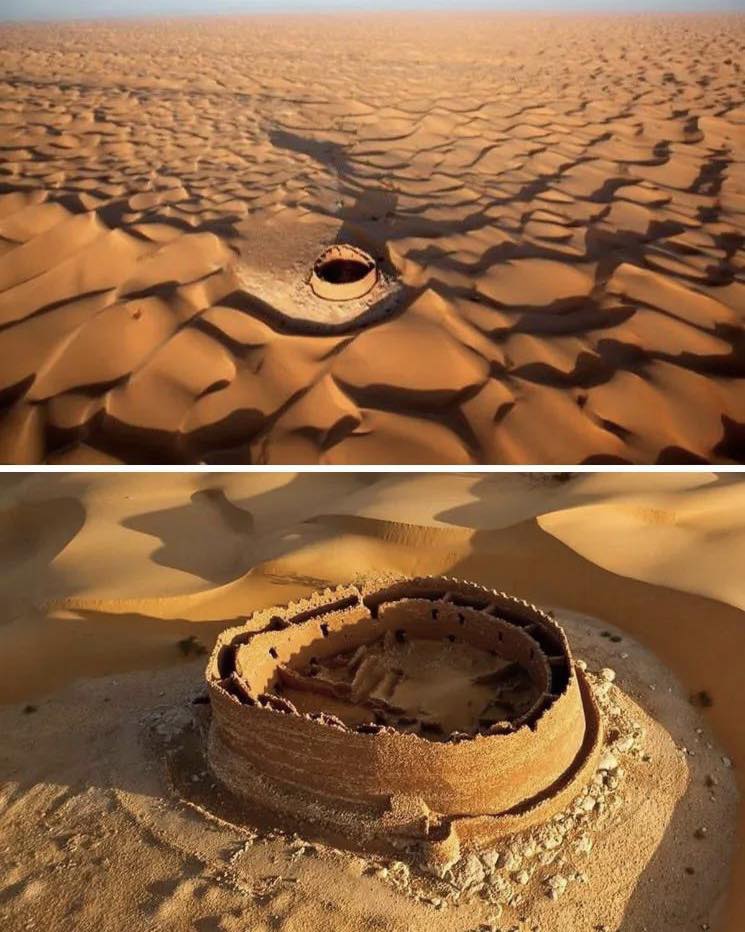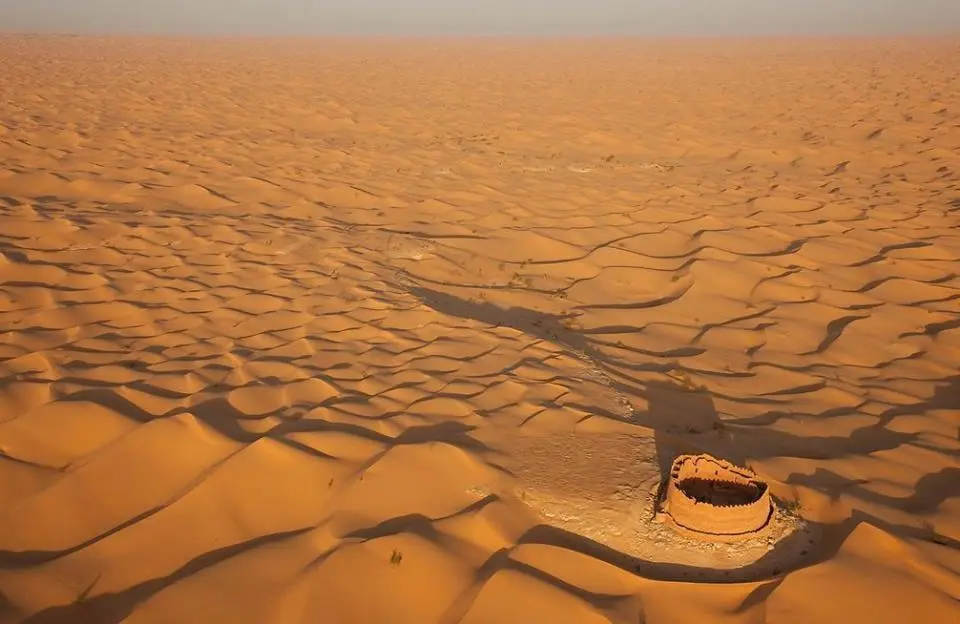The Ksar Draa in Timimoun, Algeria, is a fascinating and mysterious ancient ruin that stands as a lone sentinel amidst an endless sea of sand dunes. Despite its striking presence in the arid landscape, much of its history has been lost to time, leaving scholars, archaeologists, and historians with more questions than answers. The only documented information about the site is that at some point in history, it was inhabited by the Jewish population of the Timimoun region. However, the exact period of their settlement, the reasons for their presence, and their eventual departure remain obscure.

The ksar, a term referring to a fortified village or granary common in North Africa, would have been a crucial structure in its time, providing shelter and protection from both the harsh desert climate and potential raiders. It is likely that Ksar Draa functioned as a center for trade, governance, or religious practice, serving as a hub for the communities that lived in and around the region. The architectural remains suggest a strategic location, possibly chosen to take advantage of trade routes or natural resources available in the area.
Algeria’s desert region, particularly around Timimoun, has been home to various civilizations over the centuries, including Berbers, Arabs, and Jewish communities. Jewish history in North Africa is long and complex, stretching back to ancient times. Jewish populations are known to have settled in the region as early as the Roman period, and their presence continued throughout the Islamic era, often forming distinct communities within larger Berber or Arab societies.
The specific role of Ksar Draa in Jewish history is unclear, but historical accounts suggest that Jewish merchants and craftsmen often played a vital role in desert communities. They were involved in trade, especially in commodities like salt, gold, textiles, and spices, which were transported across the Sahara in vast caravans. Some scholars propose that Ksar Draa may have been a trading post or a religious center, possibly housing a synagogue or serving as a place of refuge during periods of instability.
The desert’s relentless climate, combined with centuries of abandonment, has left Ksar Draa in a state of ruin. The structure that remains today is a crumbling but evocative testament to a bygone era. Sand has partially buried parts of the site, and erosion has taken its toll on the ancient walls, yet the ksar continues to inspire awe and curiosity. Unlike more famous ruins in Algeria, such as those in Timgad or Djemila, Ksar Draa has not been extensively studied or excavated. This lack of archaeological investigation means that many of its secrets remain hidden beneath the sand.
Despite its enigmatic past, Ksar Draa is an important historical landmark. It serves as a reminder of the rich and diverse cultural heritage that once thrived in this part of the world. The site also raises questions about how desert communities adapted to their environment, how trade networks influenced settlement patterns, and how different religious and ethnic groups coexisted in North Africa.
For researchers, Ksar Draa represents a compelling challenge. The site could provide valuable insights into the Jewish history of Algeria, the economic and social structures of desert settlements, and the broader patterns of migration and trade in the Sahara. Excavations could potentially uncover artifacts, inscriptions, or architectural elements that offer clues about the people who once lived there. However, given the remote location and the extensive preservation efforts required, such work would be both time-consuming and costly.
The region surrounding Timimoun is known for its stunning landscapes, characterized by red sand dunes, palm groves, and traditional mud-brick architecture. The town itself is a picturesque example of Saharan life, where ancient customs and modern influences blend seamlessly. Visitors to the area are often struck by the beauty and resilience of the people who have managed to carve out a living in one of the world’s most unforgiving environments.
For those interested in history and archaeology, Ksar Draa is a fascinating site, even in its current ruined state. While local legends and oral histories might offer glimpses into its past, definitive answers will likely remain elusive until a comprehensive archaeological study is undertaken. In the meantime, the ksar stands as a silent witness to centuries of change, its walls whispering stories of a lost era to those who take the time to listen.
The preservation of sites like Ksar Draa is crucial not only for historical and academic purposes but also for cultural identity and heritage. Across North Africa, many ancient ksars have been neglected or lost due to natural decay, looting, and a lack of funding for conservation efforts. Raising awareness about their significance can help ensure that these structures are protected for future generations.

In a broader context, the mystery of Ksar Draa underscores the importance of continued exploration and documentation of lesser-known archaeological sites. While grand ruins like the pyramids of Egypt or the Roman ruins of Leptis Magna attract significant attention, smaller, more obscure locations often hold equally valuable historical insights. Every ancient site, no matter how remote, contributes to the larger tapestry of human civilization.
It is also worth noting that Algeria itself has been an underappreciated archaeological treasure trove. The country is home to some of the most remarkable ancient sites in Africa, yet many remain understudied compared to those in neighboring Tunisia or Egypt. Ksar Draa is just one of many examples of Algeria’s hidden heritage, waiting for scholars, historians, and archaeologists to unlock its secrets.
In recent years, there has been a growing interest in Saharan archaeology, driven by advances in satellite imagery, ground-penetrating radar, and other modern technologies that allow researchers to explore remote regions with greater accuracy. These tools could prove invaluable in studying Ksar Draa without causing significant disruption to the site. Non-invasive methods such as 3D mapping, drone surveys, and digital reconstruction could help create a more comprehensive understanding of the ksar’s layout and purpose.
Ultimately, Ksar Draa is more than just an ancient ruin; it is a symbol of human resilience, cultural exchange, and the enduring mysteries of the past. Whether it was a thriving center of commerce, a place of refuge, or a spiritual sanctuary, its legacy continues to captivate those who seek to understand the civilizations that once flourished in the vast expanse of the Sahara. As research and interest in Algeria’s archaeological heritage grow, perhaps one day, the full story of Ksar Draa will finally be revealed.





